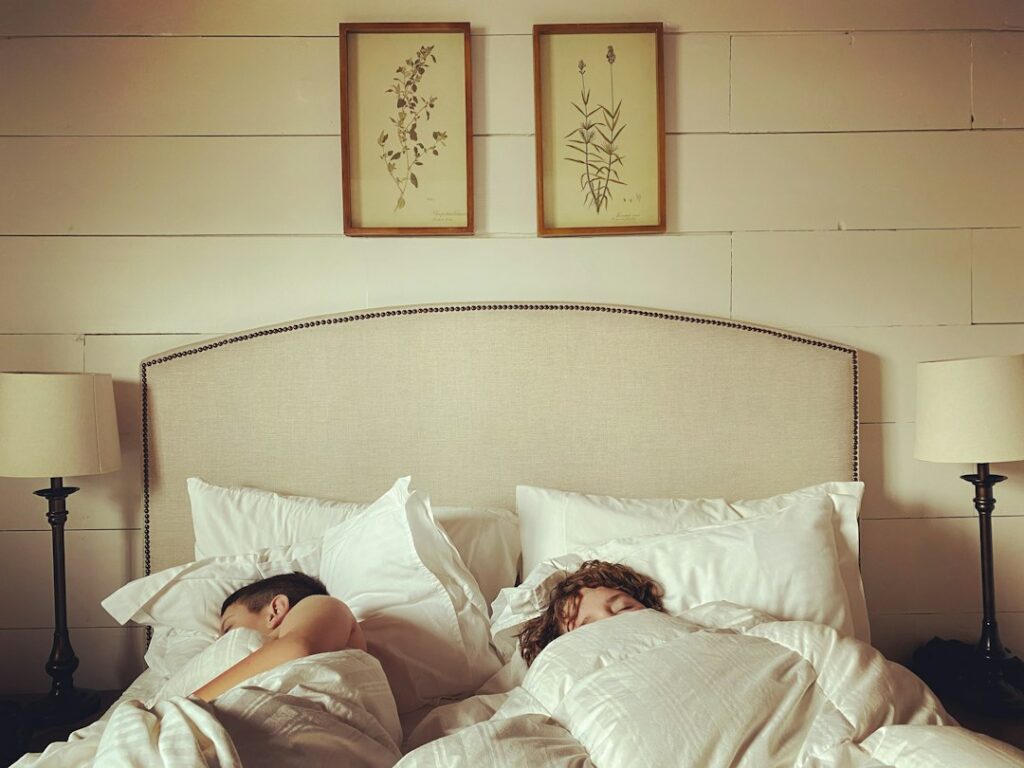


This guide will explain what biphasic sleep is and how it can help you sleep better and be more productive during the day.
By following a biphasic sleep pattern, you may notice improved memory, alertness, and overall quality of life.
Biphasic sleep patterns mean dividing your sleep into two separate periods. Instead of sleeping all in one go, you sleep in two distinct sessions within a 24-hour period. This sleeping schedule can bring many benefits. By splitting your sleep into two parts, you may have better quality sleep, be more alert, and think more clearly.
Also, biphasic sleep allows for flexibility in your schedule. You can socialize, stay awake, or do tasks during your awake time. However, it’s important to know that this sleep pattern may not work for everyone. Some people might have trouble getting enough rest at night or feel tired during the day.
It’s crucial to listen to your body and adjust your sleep schedule to ensure you stay healthy.
Explore different sleep schedules to find the best pattern for you. Biphasic sleep gives you the flexibility to adjust your sleep routine to fit your lifestyle and preferences. By trying out different schedules, you can find the right balance of nighttime sleep and daytime naps to feel refreshed and energized all day.
Here is a table to help you explore different sleep schedules:
| Sleep Schedule | Nighttime Sleep Duration | Daytime Nap Duration |
|---|---|---|
| Two nighttime periods of sleep | 4-5 hours | 1-2 hours |
| Nighttime sleep + nap | 6-7 hours | 30-60 minutes |
| First and second sleep | 3-4 hours (each) | 0-30 minutes |
Now let’s talk about the good and bad sides of biphasic sleep so you can decide if this sleep pattern is right for you. Biphasic sleep means having two separate periods of sleep within 24 hours.
It has been used for a long time and has some potential benefits. One benefit is that it can improve how well your brain works, like memory, alertness, and thinking. Biphasic sleep can also help if you have a busy schedule because it gives you time to socialize, keep watch, or do certain tasks. In some cultures, it’s also used to fulfill religious duties.
However, there are some downsides to consider. Napping can be linked to heart problems and thinking difficulties in older people. It might also be hard to find time or a place to nap during the day because of cultural beliefs or social responsibilities. People who practice biphasic sleep might struggle to get enough rest at night and feel sleepy during the day.
It’s important to think about these good and bad points before deciding if biphasic sleep is right for you.

Let’s first look at the historical importance of biphasic sleep and how it affected different cultures and time periods. Biphasic sleep has a long history and was practiced in various civilizations.
Here are a few examples:
By looking at these sleep patterns throughout history, we can understand why different cultures adopted biphasic sleep. It shows us that human sleep patterns are flexible and adaptable.
It also encourages us to consider alternative sleep schedules that may work better for our own needs and preferences. Understanding the historical significance of biphasic sleep can help us find ways to optimize our sleep patterns and improve our overall well-being.
Biphasic sleep is influenced by our biology. Here are some important biological factors:
Understanding these biological influences can help individuals choose a biphasic sleep schedule that works best for them. By considering our natural sleep-wake cycle and paying attention to our bodies, we can find a sleep pattern that gives us the best rest and freedom.
If you’re thinking about trying biphasic sleep, here are some tips to help you succeed. First, set a consistent schedule for your two sleep sessions. This will help regulate your body’s internal clock and improve your sleep quality.
Next, create a relaxing bedtime routine routine to signal to your body that it’s time to rest. You can read, take a warm bath, or practice relaxation techniques. Also, make sure your bedroom is cool, dark, and quiet to create a sleep-friendly environment.
Finally, be patient during the adjustment period. It may take time for your body to adapt to the new sleep pattern, so give yourself time to get used to it.

When it comes to exploring biphasic sleep, it’s essential to think about what the future holds for research in this area. Understanding and improving our sleep schedules has become possible through the study of biphasic sleep patterns and segmented sleep.
Here are three things to consider for the future:
The future of biphasic sleep research holds promise for better understanding and harnessing the benefits of segmented sleep. With ongoing studies and advancements in technology, we may soon see a move towards more personalized and optimized sleep schedules.
Stay tuned to this exciting field as it continues to progress.
In conclusion, trying out biphasic sleep patterns can be a different way to improve the quality of your sleep and how productive you’re during the day. By splitting your sleep into two distinct parts, you might experience benefits like better memory and alertness.
However, it’s important to think about the possible downsides, such as how it might affect your relationships and how hard it could be to get used to the new schedule.
With some thought and experimentation, biphasic sleep patterns might be worth considering for people who want to improve their sleep and overall well-being.
Ekirch A. R. (2016). Segmented Sleep in Preindustrial Societies. Sleep, 39(3), 715–716. https://doi.org/10.5665/sleep.5558
Shoen, S. (2024) Biphasic Sleep: What It Is And How It Works [online]. https://www.sleepfoundation.org/how-sleep-works/biphasic-sleep